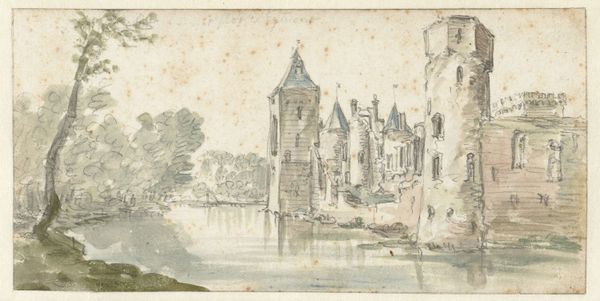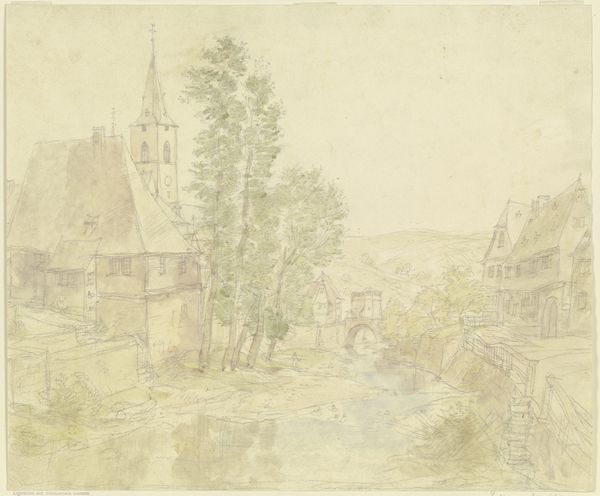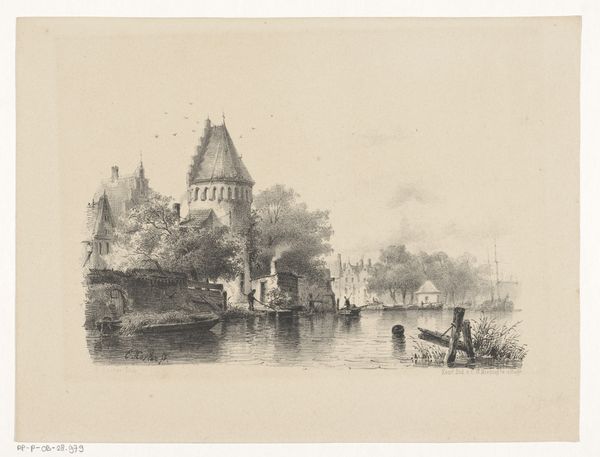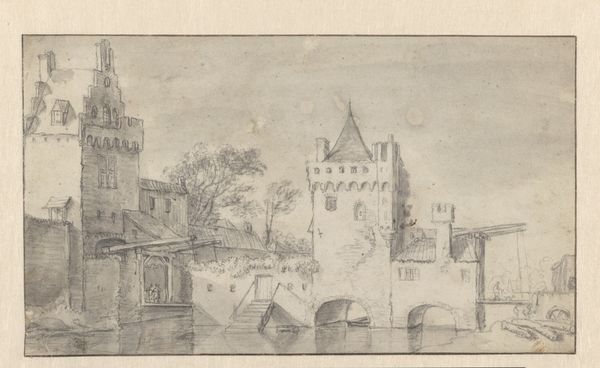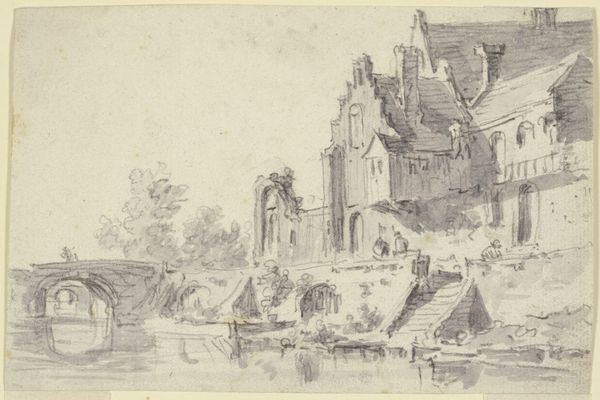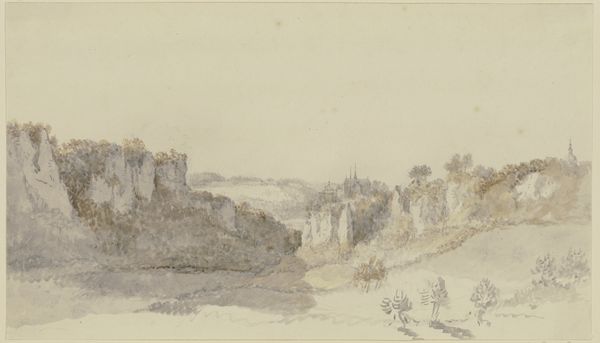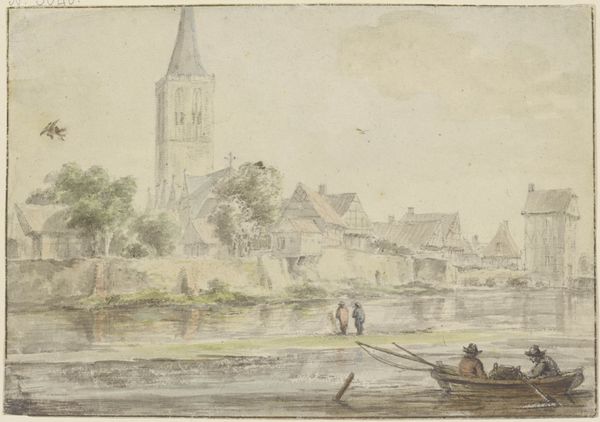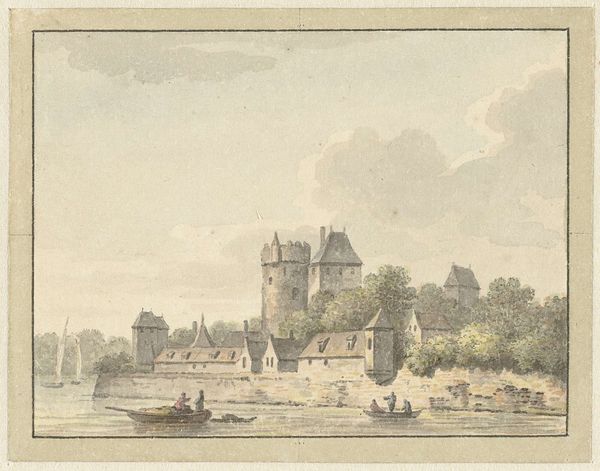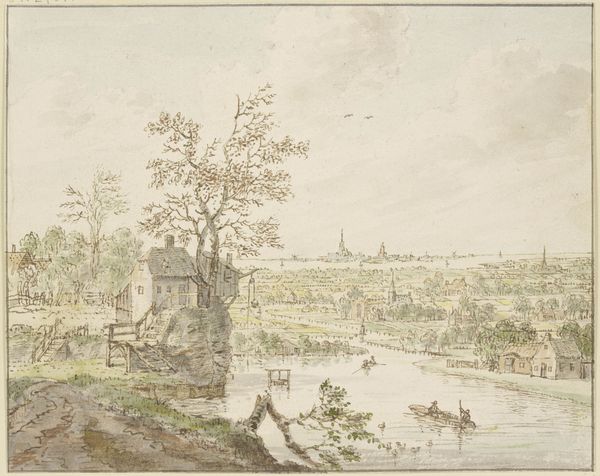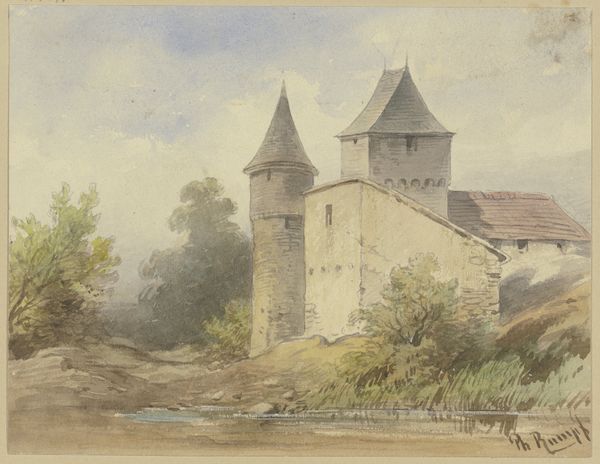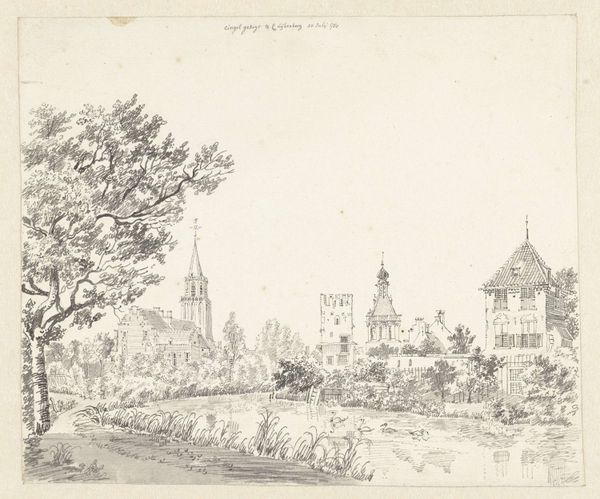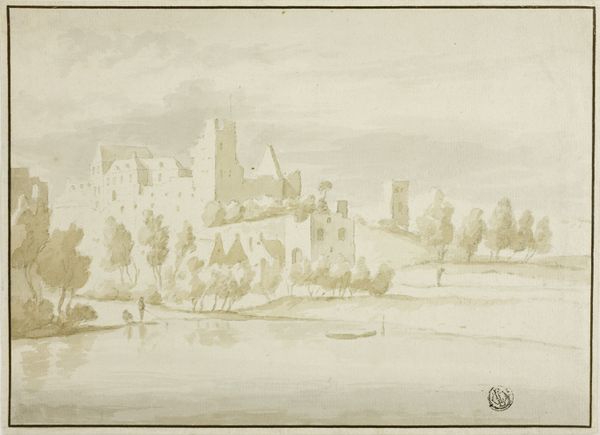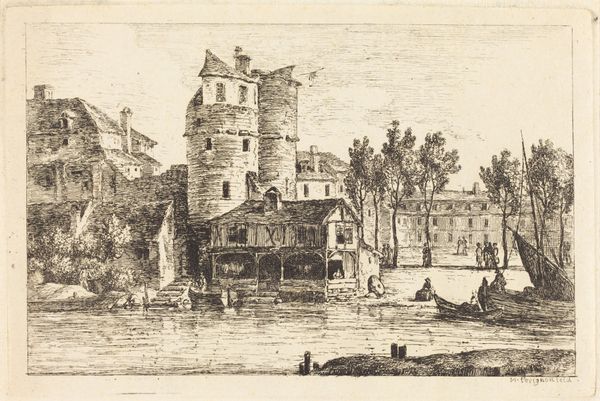
drawing, plein-air, watercolor, ink, indian-ink, pencil, pen, architecture
#
drawing
#
plein-air
#
landscape
#
watercolor
#
ink
#
coloured pencil
#
indian-ink
#
pencil
#
pen
#
cityscape
#
watercolor
#
architecture
Copyright: Public Domain
Curator: This watercolor and ink drawing by Johann Caspar Zehender captures a "Partie am Schneidwall in Frankfurt am Main." I’m immediately struck by its muted tones—a subtle palette. Editor: It almost feels ghostly, doesn’t it? There’s a palpable sense of history and a stillness that's both intriguing and melancholic. Looking at it, I think about urban development and lost spaces. How might this landscape reflect the city's evolving social dynamics during Zehender’s time? Curator: Precisely. Zehender, working during a period of significant urban and political change, uses this seemingly placid cityscape to potentially engage with Frankfurt's transformations. His choice of plein-air execution, capturing the scene directly, hints at a desire to document a specific moment, infusing the artwork with documentary power. What do you make of the composition itself? Editor: Structurally, it's fascinating how he balances the architectural elements with the natural. The towers and walls on one side and those reflections and the hints of the natural elements around them create visual harmony. It creates an interesting symmetry and balance to this piece. The light appears carefully considered as well—it seems almost to soften and give this piece its aged or almost spectral tonality. Curator: I agree. Consider the deliberate contrast of the imposing, clearly masculine-coded architecture against the subtle, traditionally feminine fluidity of the water and washes of color, the urban is often about power, who holds it and how they protect their dominion over a land or peoples, something only whispered in this quiet almost peaceful depiction of walls. In relation to identity, landscape can be viewed as both backdrop to and active creator of the drama. Editor: It is as though Zehender anticipates later urban studies by capturing both the concrete elements and the atmosphere or emotions that those elements inspire. His delicate lines manage to reflect a monumental scale that somehow feels fragile. Looking again at that subdued palette, and its monochromatic presentation is so effective in conveying that mood. Curator: A perfect illustration of how historical context deepens our engagement with formal aspects. Understanding Frankfurt’s sociopolitical evolution at that time adds significant depth to an appreciation of his skill. Editor: It leaves me thinking about how what might appear straightforward, historically, a landscape view, is revealed to speak volumes with an investigation into a historical reading of Zehender’s artistic choices. It’s so elegantly framed and conceived.
Comments
No comments
Be the first to comment and join the conversation on the ultimate creative platform.
